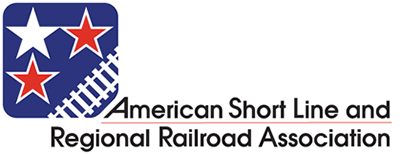Short-line railroad tax credit is not permanent, but rail stakeholders hoping that changes
It is no secret that the short line railroad sector would benefit greatly for a tax credit, known in railroad circles as 45G, to become permanent. But there is a question of if that will happen in Congress.
The benefits of 45G and what it would mean for the sector were evident in comments by top short line stakeholders–Chuck Baker, president of the National Railroad Construction & Maintenance Association, and Linda Bauer-Darr, president of the American Short Line and Regional Railroad Association (ASLRRA)-at last week’s RailTrends conference in New York, which was hosted by Progressive Railroading magazine and independent railroad analyst Tony Hatch.
At its core, 45G assists the 603 short line railroads in upgrading their track and bridges in order to handle modern freight cars, according to ASLRRA, adding that under the terms of 45G a short line railroad must invest $1 for every 50 cents in credit up to a credit cap equivalent to $3,500 per mile of track while allowing the rail industry to spend more of their own revenue to make rail transport safer and more efficient for more than 10,000 United States customers.
The 45G tax credit, which expired on December 31, 2015, was implemented in 2005, and since that time the ASLRRA said that it has enabled short line and regional railroads to invest $4 billion into infrastructure, with 2,140 rail miles improved in 2015, the last year for which data was reported), 5.27 million ties replaced, with the short line industry doling out $1.12 million, or 24%, of revenue on infrastructure.
On the surface, it would appear that 45G would have a strong chance of being made permanent, considering that the House of Representatives earlier this year introduced legislation, entitled the Building Rail Access for Customers and the Economy (BRACE) Act, which has 226 House co-sponsors and 51 Senate co-sponsors (S. 407).
“We are optimistic that there will be a way that the short line tax credit to make its way into reality,” Baker told RailTrends’ attendees. “The good news continues to be that there continues to be massive congressional support for the idea of a standalone bill to make it permanent.”
While there is optimism that making this bill permanent would greatly aid the short line sector, Baker made it clear the optimal outcome has yet to arrive, explaining that 45G is the single most heavily co-sponsored federal tax bill in the entire U.S. Senate, one would think that with that “kind of support it could get put into law without so much consternation” but nonetheless the objective remains unchanged.
ASLRRA’s Bauer-Darr put things regarding 45G into context with the tax reform bill, which made considerable headway in Congress last week.
“The message from Washington has been along the lines of ‘if you don’t support the tax reform bill, then you are not going to get much else accomplished,’” she said. “We are supportive, but [the tax reform] bill is not going to push the dial for our industry like 45G, as our industry does not make enough money for it to make that much of a difference, or have the same impact 45G would.”
She added there is an ongoing conversation occurring about how 45G meets and aligns with the White House’s messaging of Buy America, and also adding that the short line sector is not something that can be out-shored.
As previously reported, the ASLRRA has said that 45G “represents real and immediate infrastructure investment and job creation that preserves transportation and economic development opportunities.”
And on top of that, this legislation provides myriad benefits for railroad and intermodal shippers and carriers alike.
Railroad stakeholders have said that this is really about is about keeping short line railroad customers connected to the national railroad network with adequate and safe rail service, which makes this provision has such broad appeal.
There are more than 500 short line railroad carriers in 49 states, which serve as the first and last mile for more than 11,000 rail shippers. And preserving and upgrading short line railroad tracks is critically important to so many economies and communities throughout the U.S.
When freight railroads were deregulated in the U.S. in 1980 through the Staggers Act, there were 200 short line railroads, and today there are more than 550. Deregulation in effect encouraged the creation of short lines, which would have otherwise been abandoned, and short lines were previously owned by Class I railroads whom did not want to operate them anymore, because they were not part of the Class I’s core networks and were not financially viable for them, although they were financially viable for short line operators.
What’s more, abandoned short lines had suffered from decades of deferred maintenance, which supported the point of passing the tax credit to create a way of effectively lowering the costs of infrastructure upgrades so that more infrastructure upgrades could take place and preserve rail lines that would have otherwise been abandoned.













